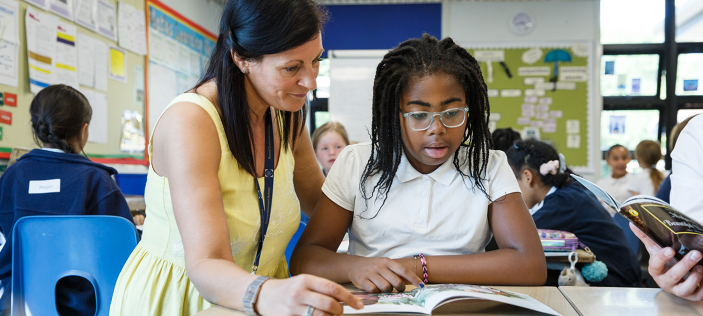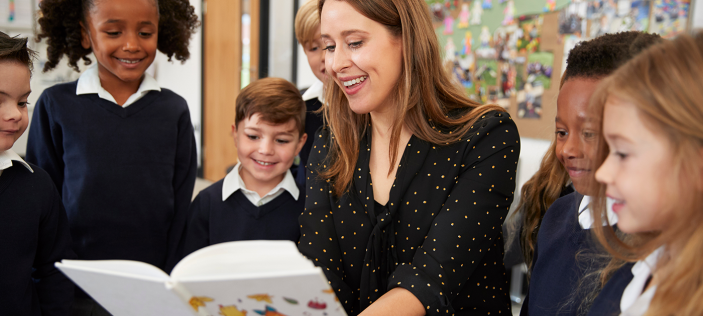‘Words mean more than what is set down on paper. It takes the human voice to infuse them with shades of deeper meaning.’Maya Angelou – I know why the caged bird sings
Highlights, key learning and juicy tips from the session – written by Penny Slater
- Begin each reading session with a fluency exercise (aka a song!). Why? It’s reading! When children sing a song with the words in front of them, they are accessing great material to develop their fluency. Also, children love to sing (as do most adults)!
- Make good use of poetry. Many poems are short and accessible and can do wonders to boost the confidence of weaker readers.
- Fluency instruction sits between word study and comprehension, hence the reference to it being a bridge. Some children can traverse that bridge by themselves, whilst others need a helping hand to get across. To begin the journey, children need a good foundation with words. Word Ladders are a great way for children to get playful with word-based learning, whilst at the same time bolstering their vocabulary knowledge. Resource: Daily Word Ladders
- The goal of phonics instruction is to get readers to the point where they do not (consciously) need to use phonics! Aim for ‘automaticity’ – reading words with no apparent mental effort so that we are releasing mental resources for the task of reading comprehension.
- Phrasing matters - children who read words within sentences word by word will have a hard time extracting meaning. Pay particular attention to children who voice generic words e.g. prepositions, or perhaps determiners (for example, a child who reads the word ‘the’ in isolation from the words around it when there is no good reason for that emphasis).
Instructional tools for teaching fluency:
- Model fluent reading: in order to become fluent, you have to know what fluency sounds like. The answer lies in reading to our children.
- Top tip: When discussing a text with the children, be sure not to just talk about the story, but how the story was read to them!
- Assisted reading: reading alongside the children in unison so that they can hear your voice and follow your lead.
- Practice:
- Type 1: Wide reading practice – encouraging lots of reading of a range of different genres and text types. As opposed to little and often; aim for lots and often!
- Type 2: Deep reading practice – repeated reading of the same text until adequate fluency is achieved.
- Top tip: To encourage repeated re-reads, invite children to perform the text they have been practising to as many ‘Lucky Listeners’ as possible. Each Lucky Listener can sign the back of the text. PS. Dogs make great listeners (Cats? Not so much!)
- Further reading: Repeated Read Alouds May Lead to Reading Success for Young Children
- Focus on phrasing: Teach high frequency words within phrases, rather than as individual words (see point above about the word ‘the’). Use text marking to guide a phrased reading. Aim for the children to ultimately ‘perform’ the text without the text marking to guide them – by this point, the phrasing should be internalised.
Tim ended the session with a poem:
The Definition of Success by R W Emerson
To laugh often and much;to win the respect of intelligent people
and the affection of children;
to earn the appreciation of honest critics
and to endure the betrayal of false friends.
To appreciate beauty;
to find the best in others;
to leave the world a bit better
whether by a healthy child, a garden patch, or a
redeemed social condition;
to know that even one life
has breathed easier
because you have lived.
This is to have succeeded.
Thank you for this inspirational session, Tim. You certainly earnt our respect, as well as our gratitude.
Ways to get in touch with Tim:
On Tim’s blog site, you will find a blog written by Penny Slater and Kathy Roe about the HFL Education Reading Fluency Project: strategies and outcomes.
Twitter @timrasinski1
Tim posts three lessons a week on Twitter
Tim is author of award-winning text: Mega-Book of Fluency



